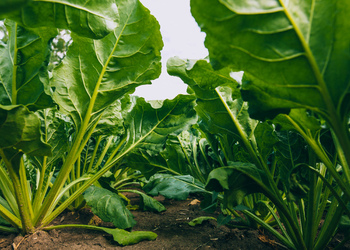https://doi.org/10.25802/SB.2023.78.35.005
В.Е. Ториков, доктор сельскохозяйственных наук
О.В. Мельникова, доктор сельскохозяйственных наук
Е.Н. Вершило аспирант
e-mail: torikova1999@mail.ru: e.vershilo@bk.ru
ФГБОУ ВО «Брянский Государственный аграрный университет», кафедра агрономии, селекции и семеноводства
Аннотация. В годы исследований положительное действие азотных удобрений проявилось в виде линейной зависимости. Прямое влияние гербицида в 2017 и 2019 гг. выражено в виде линейной, в 2018 г. – в виде квадратичной зависимости. Прямое действие фунгицида проявилось в 2017 г. в виде квадратичной зависимости. Взаимодействие фунгицида и микроэлемента в 2018 г. было отрицательным, в 2019 г. – положительным.
Отмечено снижение эффективности азотных удобрений в 2018 г. и фунгицида – в 2019 г. В варианте с оптимальным уровнем показателей урожайность зерна была несколько выше, чем с максимальным. Использование средств химизации на посевах яровой пшеницы в оптимальных дозах улучшало фитосанитарное состояние и позволяло получить достаточно высокую урожайность зерна яровой пшеницы – от 4,78 до 5,13 т/га.
Ключевые слова: яровая пшеница, агрохимикаты, сорняки, болезни, зерно, урожайность.
The Effect of the use of chemical on phytosanitary condition and yield spring wheat
Torikov V.E., Melnikova O.V., Vershilo E.N.
Summary. The results of field experiments showed that the positive effect of nitrogen fertilizers was manifested in all the years of research in the form of a linear relationship. The direct effect of the herbicide in 2017 and 2019 is expressed as a linear dependence, and in 2018 - a quadratic one. The direct effect of the fungicide was manifested in 2017 in the form of a quadratic dependence. The interaction of the fungicide and the trace element was manifested in 2018 and 2019, and in 2018 this interaction was negative, and in 2019 it was positive. The calculated mathematical models of the total contamination of spring wheat crops indicate a positive effect of the herbicide on reducing the number of weeds in all the years of experiments. There was a decrease in the effectiveness of nitrogen fertilizers in 2018 and fungicide in 2019. In 2018, with the values of the optimal variant, grain yield was slightly higher than at the maximum level. Optimal doses of nitrogen fertilizers and herbicide are required to ensure the highest yield. The use of chemicals on spring wheat crops in optimal doses provides a favorable level of phytosanitary condition and allows you to get a sufficiently high yield of spring wheat grain - up to 4.78 ...5.13 t / ha.
Key words: spring wheat, agrochemicals, weeds, diseases, grain, yield.

- Перед наукой о сахарной свекле могут открыться новые горизонты
- Совершенствование приемов разработки техники для семеноводства гибридов сахарной свеклы
- Антагонистическая активность культур рода Bacillus в отношении факультативных возбудителей болезней сахарной свеклы
- Главная задача аграриев – прирост производства
- Перспективы российского сельхозмашиностроения



